
Filter News
Area of Research
- (-) Energy Science (70)
- (-) Materials (57)
- Advanced Manufacturing (7)
- Biology and Environment (21)
- Computational Engineering (1)
- Computer Science (1)
- Energy Sciences (1)
- Fuel Cycle Science and Technology (1)
- Fusion and Fission (7)
- Fusion Energy (7)
- Isotopes (21)
- Materials for Computing (11)
- Mathematics (1)
- National Security (30)
- Neutron Science (19)
- Nuclear Science and Technology (13)
- Nuclear Systems Modeling, Simulation and Validation (1)
- Quantum information Science (1)
- Supercomputing (35)
- Transportation Systems (1)
News Type
News Topics
- (-) Advanced Reactors (4)
- (-) Clean Water (9)
- (-) Composites (12)
- (-) Cybersecurity (6)
- (-) Energy Storage (44)
- (-) Exascale Computing (1)
- (-) Isotopes (8)
- (-) Materials Science (43)
- (-) National Security (1)
- (-) Polymers (11)
- (-) Space Exploration (5)
- 3-D Printing/Advanced Manufacturing (51)
- Artificial Intelligence (6)
- Big Data (3)
- Bioenergy (13)
- Biology (6)
- Biomedical (6)
- Biotechnology (2)
- Buildings (24)
- Chemical Sciences (12)
- Computer Science (23)
- Coronavirus (9)
- Critical Materials (8)
- Environment (39)
- Fossil Energy (1)
- Fusion (4)
- Grid (28)
- High-Performance Computing (4)
- Hydropower (3)
- Machine Learning (4)
- Materials (46)
- Mathematics (3)
- Mercury (2)
- Microelectronics (1)
- Microscopy (14)
- Molten Salt (1)
- Nanotechnology (17)
- Neutron Science (15)
- Nuclear Energy (15)
- Partnerships (5)
- Physics (12)
- Quantum Computing (2)
- Quantum Science (2)
- Security (4)
- Simulation (2)
- Statistics (1)
- Summit (3)
- Transportation (46)
Media Contacts
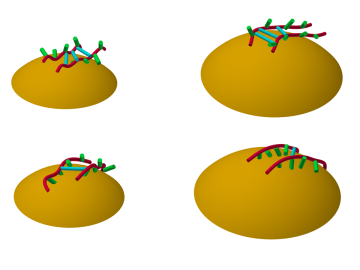
A team of researchers at Oak Ridge National Laboratory have demonstrated that designed synthetic polymers can serve as a high-performance binding material for next-generation lithium-ion batteries.
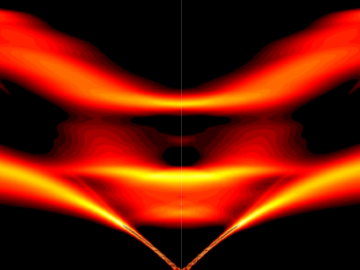
Scientists have discovered a way to alter heat transport in thermoelectric materials, a finding that may ultimately improve energy efficiency as the materials
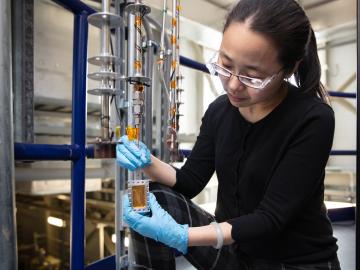
Researchers at the Department of Energy’s Oak Ridge National Laboratory, Pacific Northwest National Laboratory and Washington State University teamed up to investigate the complex dynamics of low-water liquids that challenge nuclear waste processing at federal cleanup sites.

Ionic conduction involves the movement of ions from one location to another inside a material. The ions travel through point defects, which are irregularities in the otherwise consistent arrangement of atoms known as the crystal lattice. This sometimes sluggish process can limit the performance and efficiency of fuel cells, batteries, and other energy storage technologies.
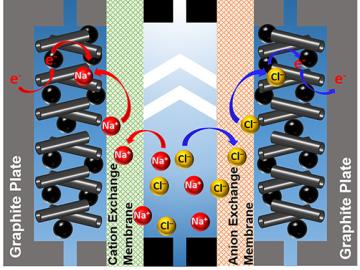
A team of scientists led by Oak Ridge National Laboratory used carbon nanotubes to improve a desalination process that attracts and removes ionic compounds such as salt from water using charged electrodes.
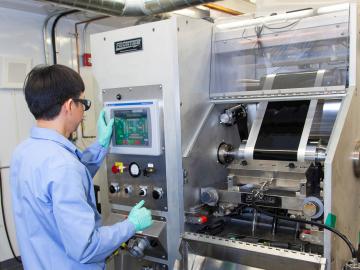
The use of lithium-ion batteries has surged in recent years, starting with electronics and expanding into many applications, including the growing electric and hybrid vehicle industry. But the technologies to optimize recycling of these batteries have not kept pace.

Scientists have tested a novel heat-shielding graphite foam, originally created at Oak Ridge National Laboratory, at Germany’s Wendelstein 7-X stellarator with promising results for use in plasma-facing components of fusion reactors.
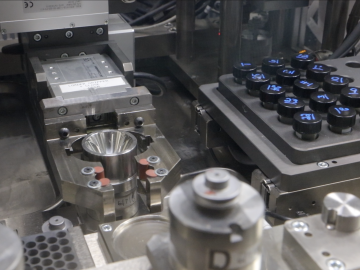
By automating the production of neptunium oxide-aluminum pellets, Oak Ridge National Laboratory scientists have eliminated a key bottleneck when producing plutonium-238 used by NASA to fuel deep space exploration.

Oak Ridge National Laboratory scientists studying fuel cells as a potential alternative to internal combustion engines used sophisticated electron microscopy to investigate the benefits of replacing high-cost platinum with a lower cost, carbon-nitrogen-manganese-based catalyst.

Carbon fiber composites—lightweight and strong—are great structural materials for automobiles, aircraft and other transportation vehicles. They consist of a polymer matrix, such as epoxy, into which reinforcing carbon fibers have been embedded. Because of differences in the mecha...


